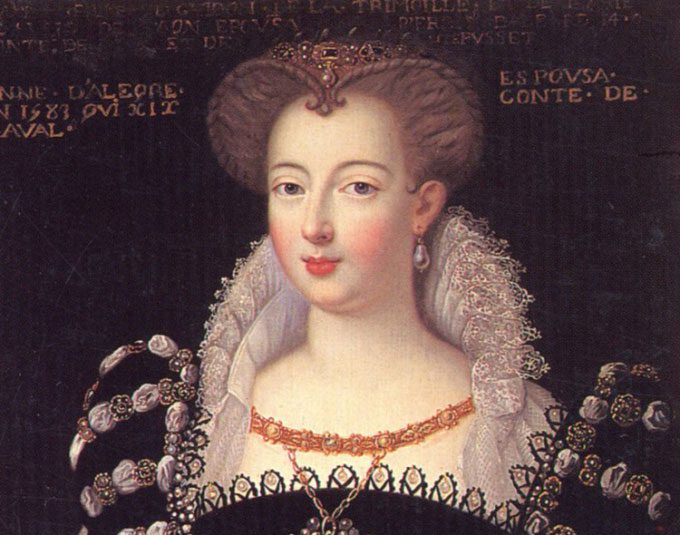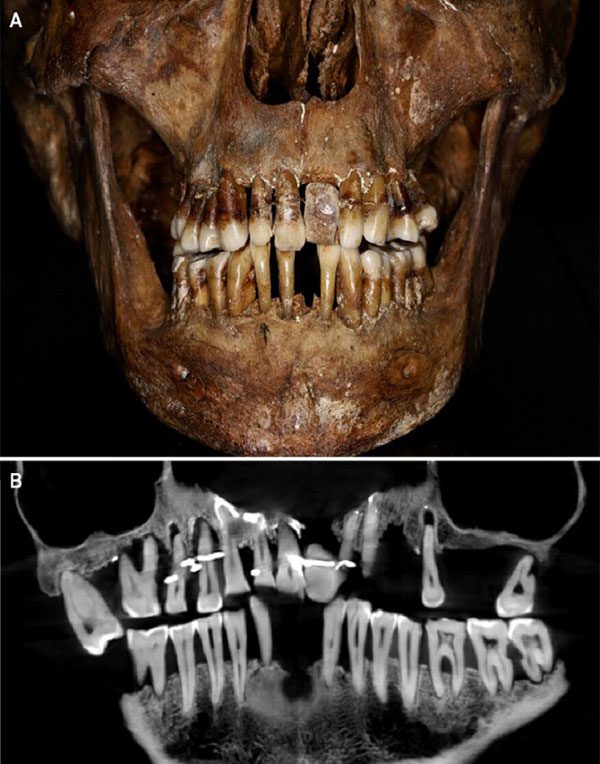A New Study Reveals that a French Noblewoman Who Died Over 400 Years Ago Used Gold Threads to Prevent Tooth Loss.
The remains of Noblewoman Anne d’Alegre, who passed away in 1619, were discovered during an archaeological excavation at Chateau de Laval in northwestern France in 1988. Her body was preserved in a lead coffin, with her skeleton and teeth still in very good condition.

Portrait of Noblewoman Anne d’Alegre. (Photo: INRAP)
At that time, the research team found that the mummy had a false tooth and gold threads, but they lacked advanced scanning tools to investigate further. Now, after 35 years, archaeologists and dentists – led by Rozenn Colleter from the French National Institute for Preventive Archaeological Research (INRAP) – have determined that d’Alegre suffered from periodontal disease, causing her teeth to become loose, according to a study published in the journal Journal of Archaeological Science: Reports this week.
Cone Beam CT technology, which uses X-rays to create three-dimensional images, revealed that the gold threads were used to hold and tighten some of the noblewoman’s teeth, while the false tooth was made from elephant ivory rather than hippo ivory, which was common at the time.
Despite this, Colleter noted that this elaborate dental work only “made the situation worse” because the gold threads needed to be tightened multiple times over the years, making the adjacent teeth even more unstable.

Anne d’Alegre’s teeth are still very well preserved. (Photo: INRAP)
D’Alegre may have endured pain not only for medical reasons. There was significant pressure on noblewomen at a time when appearance was considered closely tied to value and status in society.
Ambroise Paré, a contemporary of d’Alegre, who served as a physician for several French kings and designed similar dental prosthetics, claimed that if a patient had no teeth, their words would carry no weight.
A beautiful smile held particular significance for d’Alegre, a woman described as “controversial” in her society due to her two widowhoods, Colleter added.
D’Alegre lived through a tumultuous period in French history. She was a Huguenot Protestant and fought against Catholics during the French Wars of Religion in the late 1500s.
By the age of 21, d’Alegre was widowed for the first time and had a young son named Guy XX de Laval. As the country fell into the Eighth Religious War, d’Alegre and her son were forced to flee from Catholic forces while their property was confiscated by the king.
Her son later converted to Catholicism and went to fight in Hungary, ultimately dying in battle at the age of 20. After her second widowhood, d’Alegre succumbed to a severe illness at the age of 54. Colleter stated that d’Alegre’s teeth “indicate that she endured a lot of stress.”


















































